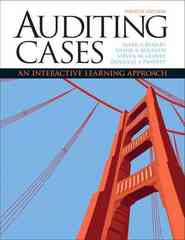Question
Read the attached case study. Discuss the presenting case, hypothesize about the diagnosis and explain the most appropriate type of treatment. Explain your answer. Samuel
Read the attached case study. Discuss the presenting case, hypothesize about the diagnosis and explain the most appropriate type of treatment. Explain your answer.
Samuel King, a 52-year-old never married janitor, presented for treatment of depression. He had been struggling with depressive symptoms for years and had tried fluoxetine, citalopram, and support ive psychotherapy, with minor improve ment. He worked full-time but engaged in very few activities outside of work.
When asked how he felt, Mr. King said that his mood was low, he was un able to enjoy things, and he had insom nia, feelings of hopelessness, low energy, and difficulty concentrating and making decisions. He denied current suicidality but added that several months earlier, he had stared at subway tracks and consid ered jumping. He reported drinking al cohol occasionally but denied using illicit drugs.
When asked about anxiety, Mr. King said he was worried about contracting diseases such as HIV. Aware of an un usually strong disinfectant smell, the in terviewer asked Mr. King if he had any particular cleaning behaviors related to the HIV concern. Mr. King paused and clarified that he avoided touching prac tically anything outside of his home. When further encouraged, Mr. King said that if he even came close to things that he considered potentially contaminated, he had to wash his hands incessantly with household bleach. On average, he washed his hands up to 30 times a day, spending hours on this routine. Physical contact was particularly difficult. Shop ping for groceries and taking public transportation were a big problem, and he had almost given up trying to social ize or engage in romantic relationships.
When asked if he had other worries, Mr. King said that he had intrusive im ages of hitting someone, fears that he would say things that might be offensive or inaccurate, and concerns about dis turbing his neighbors. To counteract the anxiety produced by these images and thoughts, he constantly replayed prior conversations in his mind, kept diaries to record what he said, and often apolo gized for fear he might have sounded of fensive. When he showered, he made sure that the water in the tub only reached a certain level for fear that if he were not attentive, he would flood his neighbors.
He used gloves at work and per formed well. He had no medical prob lems. He spent most of his free time at home. Although he enjoyed the com pany of others, the fear of having to touch something if he was invited to a meal or to another person's home was too much for him to handle. The examination revealed a casually dressed man who smelled strongly of bleach. He was worried and constricted but cooperative, coherent, and goal di rected. He denied hallucinations and other strongly held ideas. He denied a current intention to hurt himself or oth ers. He was cognitively intact. He recog nized that his fears and urges were "kinda crazy," but he felt they were out of his control.
Step by Step Solution
There are 3 Steps involved in it
Step: 1

Get Instant Access to Expert-Tailored Solutions
See step-by-step solutions with expert insights and AI powered tools for academic success
Step: 2

Step: 3

Ace Your Homework with AI
Get the answers you need in no time with our AI-driven, step-by-step assistance
Get Started


